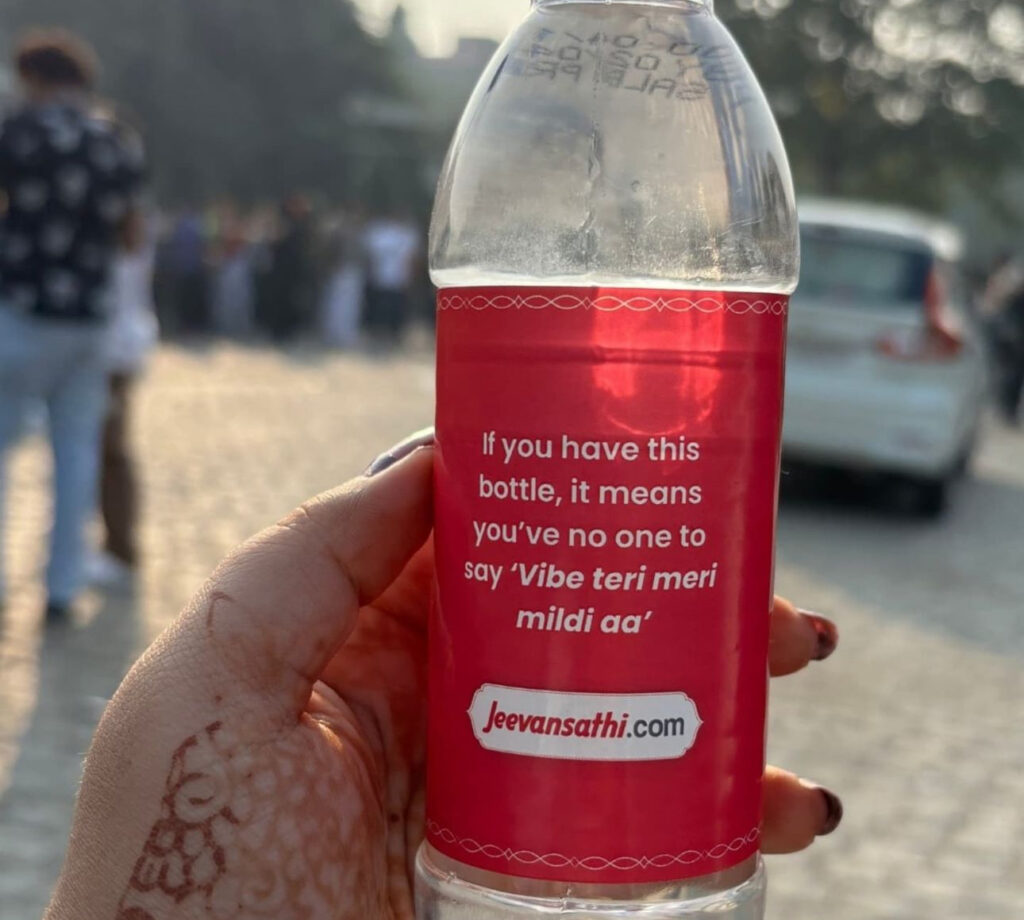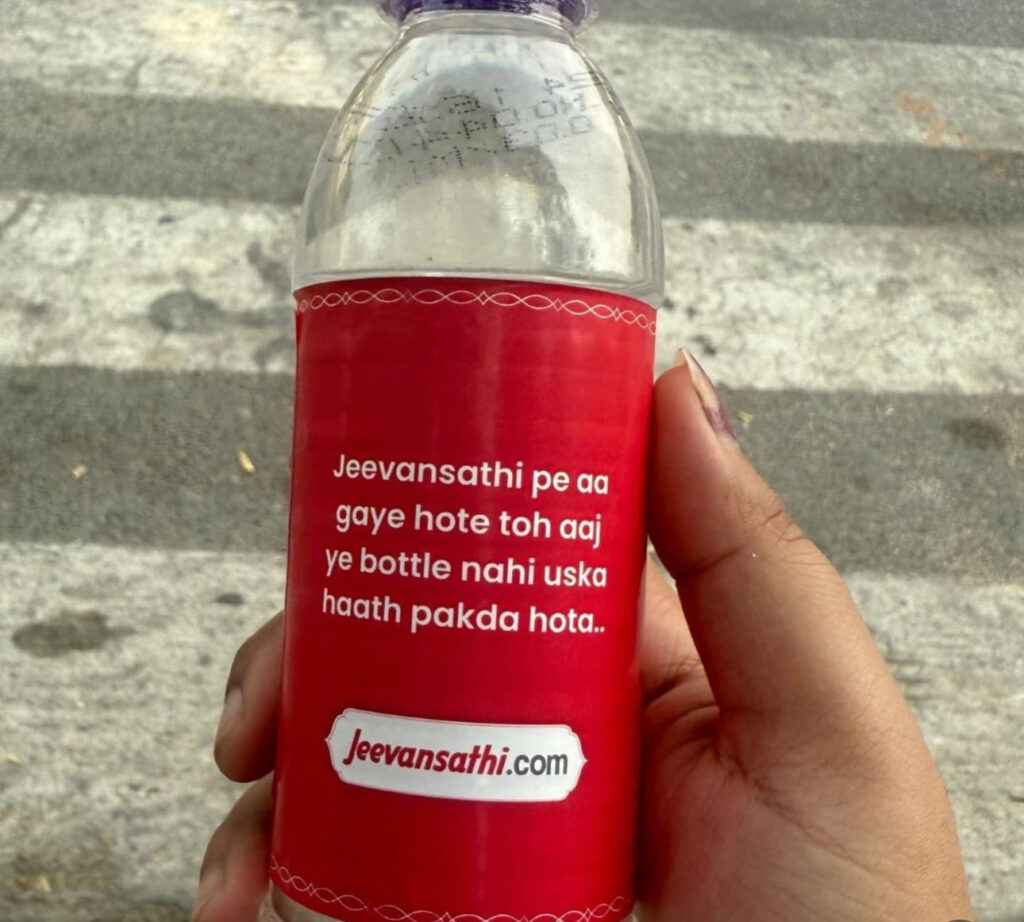A couple of weeks ago, I came across a quirky idea that an Indian dating site used to onboard more singles. At a popular concert in Delhi, they distributed free water bottles exclusively to single attendees, encouraging them to sign up on their platform. The distributors wore T-shirts emblazoned with “singles ko pani pilao yojana”, which translates to “A scheme to get singles hydrated.”

The water bottles carried clever messaging, like:
“If you signed up on Jeevansathi, you’d be holding someone’s hand, not this bottle,” and
“If you have this bottle, it means you’ve no one to say ‘vibe teri meri mildi aa,’” a cheeky nod to Diljit Dosanjh’s hit song playing at the concert.


This fun, low-cost marketing tactic wasn’t just entertaining—it highlighted a serious challenge: solving the dating problem.
The Dating Problem
Dating apps are essentially two-sided marketplaces. Like Uber matches riders with drivers or Airbnb connects travelers with hosts, dating platforms attempt to match singles with their potential partners. But two main hurdles stand in the way of success:
- Onboarding Enough Users: A dating app thrives when there’s a critical mass of users. Like Uber recruited drivers first or Airbnb scraped Craigslist for rental listings, dating apps must figure out how to attract either supply (people actively seeking partners) or demand (people passively browsing).
- Encouraging Profile Completion: A picture may be worth a thousand words, but on dating apps, it’s priceless. Users need to upload photos, fill in bios, and share their likes to create an engaging profile—a step many find cumbersome and skip.
This got me thinking: hasn’t someone already cracked these onboarding and engagement challenges? Enter Instagram (IG) and Facebook (FB).
The Case for Instagram and Facebook Dating
Facebook boasts 3 billion monthly active users (MAUs), while Instagram sits at over 2 billion. In countries with high internet penetration, the likelihood of your potential date being on one (or both) platforms is staggeringly high.
Both platforms already possess the holy grail of dating app success:
- Photos: Your IG feed and FB profile are visual showcases of your life.
- Likes and Interests: IG and FB track your activity, making it easier to match you with someone who shares your hobbies or music taste.
Facebook even launched a dating product in 2019. However, it struggled with user adoption and copy cat features that failed to leverage Meta’s unique social features, making it an afterthought in Meta’s ecosystem.
Moreover, other people are already doing it. Take Serena Kerrigan for instance, who runs let’s fucking date account on IG to connect people with similar goals and lifestyles.
The Privacy Dilemma
Dating is deeply personal, and users value their privacy. Imagine swiping left on someone only for them to still have access to your IG stories or FB posts?
Post-Cambridge Analytica, Meta’s cautious approach to privacy has left their dating product underdeveloped and out of sync with user needs.
But these issues aren’t insurmountable. With the right strategy, Instagram and Facebook could become the ultimate dating platforms.
The Solution: A Dedicated Dating App with IG/FB Integration
Instead of cluttering Instagram (Reels, Shopping, Stories) and Facebook (Messenger, Marketplace, Videos, Groups) with dating features, Meta should launch a standalone app that integrates seamlessly with IG and FB. This approach offers several advantages:
- Combat Fake Profiles: Established IG/FB accounts can be used for verification, reducing fraud—a persistent problem on apps like Tinder. Imagine seeing a blue check for anyone who has had an active FB/IG account for more than a year. This is as high of an assurance of a real person that any company can get, which should yield an automatic blue check mark, considering verified account.
- Bypass EU Regulations: A standalone app avoids the antitrust scrutiny that recently fined Meta $840M for bundling features like Marketplace with Facebook.
How It Would Work: A Rough Sketch
Acquisition
Meta could target users based on key variables like relationship status, age, and activity feed. A single click could download the dating app and link it to their existing account with configurable privacy restrictions.
Activation
Upon opening the app, users would log in with their IG or FB accounts, automatically importing most popular photos and likes. A simple onboarding flow would prompt users to complete their profile.
Retention
The app could allow users to selectively share IG stories or FB posts, with a toggle for privacy preferences. Say you’re into martial arts – you can post a photo of you working out in the dating app with all the singles within 50 mile radius and who are also in martial arts! This keeps the experience fresh and personal. Additionally, it provides great conversation starters than the pressure of “liking” someone.
Monetization
Meta could monetize the dating app in several ways:
- Direct: Premium features like boosting profiles or advanced search filters.
- Indirect: Targeted ads or organizing local events for singles—a unique approach that only Meta’s scale make it possible and no other dating platform offers today.
Closing Thoughts
Instagram and Facebook have the tools, user base, and technology to revolutionize online dating. All they need is the vision to build a dedicated platform that bridges the gap between casual scrolling and meaningful connections.
Heck, Facebook started as directory for college students to find other interesting college mates (I bet mostly people from opposite sex to go on dates!).
Dating isn’t just about matching profiles—it’s about creating experiences. And with the right execution, Meta could turn the world’s most popular social platforms into the ultimate love story facilitators.
Get freshly brewed hot takes on Product and Investing directly to your inbox!

